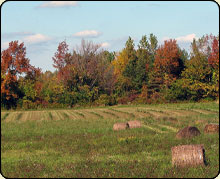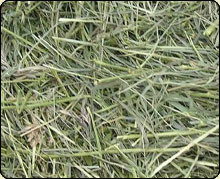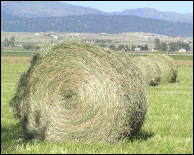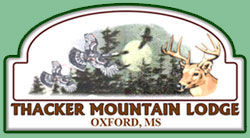|
Hunting, Recreational, Fishing, Investment Land For Sale in Mississippi, Delta, Ranch, Farm, Timber Land for Sale In Mississippi
|
Welcome
Thacker Mountain Lodge Land and Property Division offers hay acreage, hay farms, Mississippi hay farms, Delta hay farms, Mississippi hay farms for sale and Mississippi Delta hay farms for sale. Thacker Mountain Lodge also offers, for sale Premium Mississippi, Delta, and Mid-South, land, ranches, farms, investment, recreational, timberland, and commercial property located in the river delta. This area is referred to as the Mississippi River Hay Delta area. Commonly used plants for hay include mixtures of grasses such as rye grass (Italian rye grass, Lolium multiflorum), timothy, brome, fescue, coastal bermuda, orchard grass, and other native species, depending on region. Many types of hay may also include legumes, such as alfalfa (lucerne) and clovers (red, white and subterraneum). Pasture flowers are also sometimes a part of the mix, though other than legumes, which ideally are cut pre-bloom, flowers are not necessarily desired, and in some cases may be toxic to animals.
|

 hay Allergy
hay Allergy
Small bales are still produced today. While balers for small bales are still manufactured, as well as loaders and stackers, there are some farms that still use equipment manufactured over 50 years ago, kept in good repair. The small bale remains part of overall ranch lore and tradition with "hay bucking" competitions still held for fun at many rodeos and county fairs. Small bales are stacked in a criss-crossed fashion sometimes called a "rick" or "hayrick." Since rain washes nutrition out of the hay and can cause spoilage or mold, hay in small bales is often stored in a hayshed or protected by tarpaulins. If this is not done, the top two layers of the stack are often lost to rot and mold, and if the stack is not arranged in a proper hayrick, moisture can seep even deeper into the stack.
|

 Early Hay Farmers
Early Hay Farmers
Early farmers noticed that growing fields produced more fodder in the spring than the animals could consume, and that cutting the grass in the summer, allowing it to dry and storing it for the winter provided their domesticated animals with better quality nutrition than simply allowing them to dig through snow in the winter to find dried grass. Therefore, some fields were "shut up" for hay. Up to the end of the 19th century, grass and legumes were not often grown together because crops were rotated.[citation needed] By the 20th century, however, good forage management techniques demonstrated that highly productive pastures were a mix of grasses and legumes, so compromises were made when it was time to mow. Later still, some farmers grew crops, like straight alfalfa (lucerne), for special-purpose hay such as that fed to dairy cattle.
|

 Thacker Mountain Lodge
Thacker Mountain Lodge
Thacker Mountain Lodge Timber and land, Property division offers hunting and fishing property for sale. If your investment property group wants to buy mid-south hunting property, Mississippi hunting land for sale, Mississippi homes, Mississippi farms, Mississippi ranches and hunting property, Mississippi hunting property, mid-sized hunting property, or Mississippi recreational hunting property, Thacker Mountain Lodge Timber and land Property Division can help.
Call The Thacker Mountain Lodge Land and Timber Property Division today or email us at
properties@thackermountainlodge.com
|
|
|
Hay Farms for Sale, Mississippi Hay Farms, Mississippi Delta Hay Farms, Hay Farms
|
Hay is a generic term for grass or legumes that have been cut, dried, and stored for use as animal feed, particularly for grazing animals like cattle, horses, goats, and sheep. Hay can also be fed to pets such as guinea pigs and rabbits, though they consume much smaller quantities. Pigs may be fed hay, but they do not digest it very efficiently.

|
|
|
Hay is fed when or where there is not enough pasture or rangeland on which to graze an animal, when grazing is unavailable due to weather - such as during the winter, or when lush pasture by itself is too rich for the health of the animal. It is also fed during times when an animal is unable to access pasture, such as when animals are kept in a stable or barn.
|
|

|
Need Mississippi hunting leases, mid-south hunting and fishing spots, Mississippi real estate, homes, farms, ranches, and Mississippi deer hunting, deer hunting land for sale in Mississippi, Thacker Mountain Lodge land and timber property division can supply what you need.
|
|
|

 Hay Feeding Hay Feeding
Hay or grass is the foundation of the diet for all grazing animals and can provide as much as 100% of the fodder required for an animal. Hay is usually fed to an animal in place of allowing the animal to graze on grasses in a pasture, particularly in the winter or during times when drought or other conditions make pasture unavailable. Animals that can eat hay vary in the types of grasses suitable for consumption, the ways they consume hay, and how they digest it. Therefore, different types of animals require hay that consists of similar plants to what they would eat while grazing, and likewise, plants that are toxic to an animal in pasture are also toxic if they are dried into hay.
Most animals are fed hay in two daily feedings, morning and evening. However, this schedule is more for the convenience of humans, as most grazing animals on pasture naturally consume fodder in multiple feedings throughout the day. Some animals, especially those being raised for meat, may be given enough hay that they simply are able to eat all day. Other animals, especially those that are ridden or driven as working animals, are only free to eat when not working, and may be given a more limited amount of hay in order to prevent them from getting too fat. The proper amount of hay and the type of hay required varies somewhat between different species. Some animals are also fed concentrated feeds such as grain or vitamin supplements in addition to hay. In most cases, hay or pasture forage must make up 50% or more of the diet by weight.
One of the most significant differences in hay digestion is between ruminant animals, such as cattle and sheep; and non-ruminant, hindgut fermentors, such as horses. Both types of animals can digest cellulose in grass and hay, but do so by different mechanisms. Because of the four-chambered stomach of cattle, they are often able to break down older forage and have more tolerance of mold and changes in diet. The single-chambered stomach and cecum or "hindgut" of the horse uses bacterial processes to break down cellulose that are more sensitive to changes in feeds and the presence of mold or other toxins, requiring horses to be fed hay of more consistent type and quality. Thacker Mountain Lodge Land and Property Division offers hay acreage, hay farms, Mississippi hay farms, Delta hay farms, Mississippi hay farms for sale and Mississippi Delta hay farms for sale.
Different animals also utilize hay in different ways: Cattle evolved to eat forage in relatively large quantities at a single feeding, and then, due to the process of rumination, take a considerable amount of time for their stomachs to digest food, often accomplished while the animal is lying down, at rest. Thus quantity of hay is important for cattle, who are able to effectively digest hay of low quality if fed in sufficient amounts. Sheep will eat between two and four percent of their body weight per day in dry feed, such as hay, and are very efficient at obtaining the most nutrition possible from three to five pounds per day of hay or other forage. They require three to four hours per day to eat enough hay to meet their nutritional requirements.Unlike ruminants, horses digest food in small portions throughout the day, and can only utilize approximately 2.5% of their body weight in feed in any 24-hour period. They evolved to be continuously on the move while grazing, (covering up to 50 miles per day in the wild) and their stomach digests food quite rapidly. Thus, they extract more nutrition out of smaller quantities of feed. However, when horses are fed low-quality hay, they may develop an unhealthy, obese, "hay belly" due to over-consumption of "empty" calories. If their type of feed is changed dramatically, or if they are fed moldy hay or hay containing toxic plants, they can become ill; colic is the leading cause of death in horses.

|

Transporting Hay
Hay production and harvest, colloquially known as "making hay", "haymaking", or "doing hay," involves a multiple step process: cutting, drying or "curing," processing, and storing. Hayfields do not have to be reseeded each year in the way that grain crops are, but regular fertilizing is usually desirable, and overseeding a field every few years helps increase yield.
Methods and the terminology to describe the steps of making hay have varied greatly throughout history, and many regional variations still exist today. However, whether done by hand or by modern mechanized equipment, tall grass and legumes at the proper stage of maturity must be cut, then allowed to dry (preferably by the sun), then raked into long, narrow piles known as windrows. Next, the cured hay is gathered up in some form (usually by some type of baling process) and placed for storage into a haystack or into a barn or shed to protect it from moisture and rot.
During the growing season, which is spring and early summer in temperate climates, grass grows at a fast pace. It is at its greatest nutritive value when all leaves are fully developed and seed or flower heads are just a bit short of full maturity. When growth is at a maximum in the pasture, if judged correctly, the pasture is cut. Hay cut too early will not cure as easily due to high moisture content, plus it will produce a lower yield per acre than longer, more mature grass. But hay cut too late is coarser, lower in resale value and has lost some of its nutrients. There is usually about a two-week "window" of time in which hay is at its ideal stage for harvesting.
Hay can be raked into rows as it is cut, then turned periodically to dry, particularly if a modern swather is used. Or, especially with older equipment or methods, the hay is cut and allowed to lie spread out in the field until it is dry, then raked into rows for processing into bales afterwards. During the drying period, which can take several days, the process is usually speeded up by turning the cut hay over with a hay rake or spreading it out with a tedder. If it rains while the hay is drying, turning the windrow can also allow it to dry faster. However, turning the hay too often or too roughly can also cause drying leaf matter to fall off, reducing the nutrients available to animals. Drying can also be speeded up by mechanized processes, such as use of a hay conditioner, or by use of chemicals sprayed onto the hay to speed evaporation of moisture, though these are more expensive techniques, not in general use except in areas where there is a combination of modern technology, high prices for hay, and too much rain for hay to dry properly.
Once hay is cut, dried and raked into windrows, it is usually gathered into bales or bundles, then hauled to a central location for storage. In some places, depending on geography, region, climate, and culture, hay is gathered loose and stacked without being baled first.
Hay must be fully dried when baled and kept dry in storage. If hay is baled while too moist or becomes wet while in storage, there is a significant risk of spontaneous combustion. Hay stored outside must be stacked in such a way that moisture contact is minimal. Some stacks are arranged in such a manner that the hay itself "sheds" water when it falls. Other methods of stacking use the first layers or bales of hay as a cover to protect the rest. To completely keep out moisture, outside haystacks can also be covered by tarps, and many round bales are partially wrapped in plastic as part of the baling process. Hay is also stored under a roof when resources permit. It is frequently placed inside sheds, or stacked inside of a barn. On the other hand, care must also be taken that hay is never exposed to any possible source of heat or flame, as dry hay and the dust it produces are highly flammable. Thacker Mountain Lodge Land and Property Division offers hay acreage, hay farms, Mississippi hay farms, Delta hay farms, Mississippi hay farms for sale and Mississippi Delta hay farms for sale.

|

Thacker Mountain Lodge Timber and land, Property division offers hunting and fishing property for sale. If your investment property group wants to buy mid-south hunting property, Mississippi hunting land for sale, Mississippi homes, Mississippi farms, Mississippi ranches and hunting property, Mississippi hunting property, mid-sized hunting property, or Mississippi recreational hunting property, Thacker Mountain Lodge Timber and land Property Division can help.
Need Mississippi hunting leases, mid-south hunting and fishing spots, Mississippi real estate, homes, farms, ranches, and Mississippi deer hunting, deer hunting land for sale in Mississippi, Thacker Mountain Lodge land and timber property division can supply what you need.
Call The Thacker Mountain Lodge Land and Timber Property Division today or email us at
properties@thackermountainlodge.com

|
|
|
|